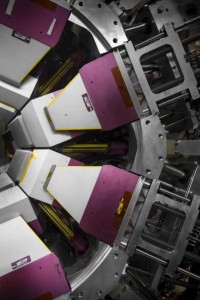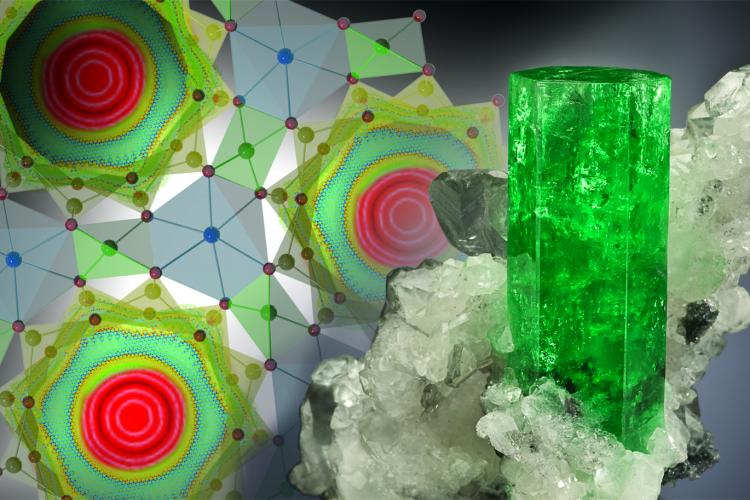Exciting news from the National Film Board of Canada arrived in my mailbox this morning (Monday, Apr. 22, 2013),
The National Film Board of Canada (NFB) and the Canadian Space Agency (CSA) have teamed up to create NFB Space School, a free and fun interactive learning experience for families and classes alike that engages young Canadians in the wonders of space exploration by giving them their own front-row seat to CSA Astronaut Chris Hadfield’s historic mission aboard the International Space Station (ISS).
Designed for youth between the ages of 11 and 15, NFB Space School helps kids discover more about space, science, technology and leadership, reigniting a wonder about our universe through cutting-edge interactive features.
The out-of-this-world new website will blast off with an online launch from Halifax’s Discovery Centre, featuring a 20-minute Q&A with Commander Hadfield, the first Canadian to command the ISS, via a live downlink from 12:10 p.m. to 12:30 p.m., Atlantic Time [8:10 – 8:30 am PDT]. Commander Hadfield will answer questions from Halifax-area school children and media while he orbits the Earth aboard the ISS. [This event has occurred.]
NFB Space School is launching with two modules, Mission and Leadership, featuring exclusive footage of Hadfield training for his historic mission, along with interactive videos and quizzes. The site will be updated with new modules on such subjects as astronomy, history and astrobiology.
Available in both English and French, NFB Space School is also ideal for classroom use, with additional educational resources available through the NFB’s subscription-based educational portal, CAMPUS, in September 2013.
NFB Space School is a unique partnership between the NFB, one of the world’s leading digital content hubs and Canadian pioneer in online streaming for educators, and the CSA, committed to leading the development and application of space knowledge for the benefit of Canadians and humanity. Paul McNeill is the creative lead and producer of NFB Space School. Graham MacDougall is the interactive strategist, with interactive design, development and programming by Halifax-based web developers theREDspace. Ravida Din is the executive producer for the NFB. NFB Space School was developed and produced by the NFB’s Atlantic Centre in collaboration with the Canadian Space Agency (CSA).
To learn more about the Expedition 34/35 mission and the CSA’s activities, visit Chris Hadfield’s Astronaut Mission page. For up-to-the-minute updates, follow the Canadian Space Agency and Chris Hadfield on social media.
I was a little disappointed I didn’t receive the announcement a little sooner as I would have liked to view the livestream interview with Hadfield. It’s easy to forget just how big Canada is and that four hour time difference really has an impact when you’re on the ‘wrong’ end of the country.
It was a great idea to launch the school with a live event with Hadfield communicating from the space station. Unfortunately, there’s no follow through on the rest of the website. For two suggestions/examples. (a) An ‘explorer’ doesn’t get to amass enough points answering the quizzes to perhaps get a special session with Hadfield or someone else on the space station. (b) There aren’t any projects where a student could create their own space film and submit it for a contest. In all, this interactive site is curiously unidirectional. Information is pumped out and the participant/student answers quizzes, very much like school. In the end, the Space School seems to be designed more for teachers than explorers of all ages (but especially those from the ages of 11 to 15). Anyway, it’s early days yet for the school and hopefully there are already some changes being planned.
Now, here’s a bit of news from the pacific end of the country. TRIUMF, Canada’s national laboratory for nuclear and particle physics, has been recognized with a second place standing in an international photography exhibition, the second Global Particle Physics Photowalk. From the TRIUMF Apr. 19, 2013 news release,
TRIUMF is pleased to announce and congratulate local contestant Andy White, a 3rd year Visual Arts student at UBC from North Vancouver, who was awarded 2nd place in the juried competition for his winning photo of TIGRESS.
…
Along with studying art and photography at school, Andy is also a competitive Javelin thrower on the varsity track & field team. His spirited nature served him well in this competition. “I come from quite an Arts-based background and really don’t have much involvement with science, yet I have always been fascinated by technology so I was eager to get involved. This would be my first time visiting TRIUMF and I had no idea what to expect,” explained Andy.
What he found during his visit to TRIUMF was TIGRESS, a nuclear physics spectrometer, in the ISAC-II building. This equipment allows researchers to study the structure of the nucleus and the forces that hold it together by analyzing rare nuclear reactions.
“What drew me to TIGRESS was its element of fine craftsmanship, colour and shape. I chose to photograph it symmetrically and end-on to reveal these features as they were best presented,” said Andy.
Greg Hackman, research scientist at TRIUMF, is responsible for the operation and maintenance of TIGRESS. “This is a gamma-ray detector designed for nuclear structure experiments and specifically to make optimal use of ISAC,” says Greg. “The function entirely drove the form.”
Andy muses, “It was great connecting the arts with science, and this photowalk offered me a unique challenge to present technology in a creative way. What is most fascinating is our human capability to create such instruments, and this is what I intended to bring forward in my images.”
To decipher the science behind TIGRESS, as displayed in Andy’s photo, Science Division Head Reiner Kruecken explains, “Instruments like TIGRESS allow us to peak into the femto-world of the atomic nucleus and deduce what is happening in this otherwise invisible world which is only the size of one millionth of a millionth of a millimeter. What you see in the photo from inside to outside are Germanium crystals and two layers of so-called BGO shield detectors. These shield detectors look toward the center of the array where we induce nuclear reactions and show us something about the structure and dynamics in atomic nuclei.”
Just as physicists are enticed by symmetries in nature as they unleash mysteries of the universe, photographers are drawn to symmetries in their subjects as they create alluring images to captivate their audience.
Here’s White’s award-winning photograph,

Credit: Andy White
Interactions.org, one of the event organizers, has provided more detail about this international event in an Apr. 18, 2013 news release,
In September 2012, hundreds of amateur and professional photographers had the rare opportunity to explore and photograph accelerators and detectors at particle physics laboratories around the world.
…
In the InterActions Physics Photowalk, ten of the world’s leading particle physics laboratories offered special behind-the-scenes access to their scientific facilities:
Brookhaven National Laboratory
(New York, USA)
Catania National Laboratory
(Catania, Italy)
Chilbolton Observatory
(Hampshire, UK)
Daresbury Laboratory
(Cheshire, UK)
Fermi National Accelerator Laboratory
(Illinois, USA)
Frascati National Laboratory
(Frascati, Italy)
Gran Sasso National Laboratory
(Gran Sasso, Italy)
Rutherford Appleton Laboratory
(Oxfordshire, UK)
TRIUMF
(Vancouver, Canada)
United Kingdom Astronomy Technology Centre
(Edinburgh, UK)
Participating photographers submitted thousands of photos for local competitions. Each laboratory selected local winners, and advanced these top photographs to two global competitions. [emphasis mine]
More than 1,250 photography enthusiasts voted online to name the global people’s choice winners. [emphasis mine] Nino Bruno’s photograph of a tunnel connecting the underground halls of INFN’s Gran Sasso National Laboratory garnered the most votes, followed closely by Enrique Diaz’s side view of the STAR detector at Brookhaven National Laboratory, and Steve Zimic’s photograph of the tunnel that houses Brookhaven’s RHIC accelerator.
…
A panel of international judges also selected three winners. [emphasis mine] The judges—photographers Stanley Greenberg from the United States, Roy Robertson from the United Kingdom, Andrew Haw from Canada and Luca Casonato from Italy—awarded the top prize to Joseph Paul Boccio’s detailed photograph of the KLOE detector at INFN’s Frascati National Laboratory, second prize to Andy White’s photo capturing the color and symmetry of the TIGRESS detector at the Canadian laboratory TRIUMF, and third prize to Helen Trist’s photograph of data storage at the UK’s Rutherford Appleton Laboratory. [emphasis mine]
There are prizes for the winners,
The winning photographs will be featured in upcoming issues of the particle physics publications the CERN Courier and symmetry and the Italian popular science magazine Le Scienze. The participating laboratories will also feature the global winners and their local Photowalk selections in temporary exhibits.
I wonder if White and other local contestants will be have their photos displayed not just in Vancouver (Canada) where TRIUMF is located but perhaps also at some of the member institutions across the country.

